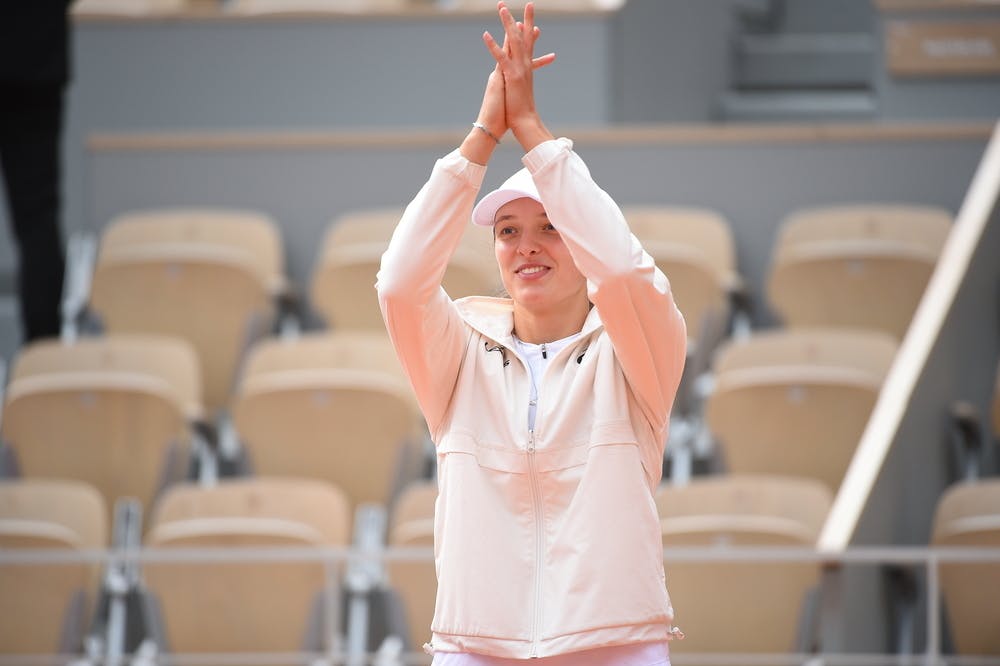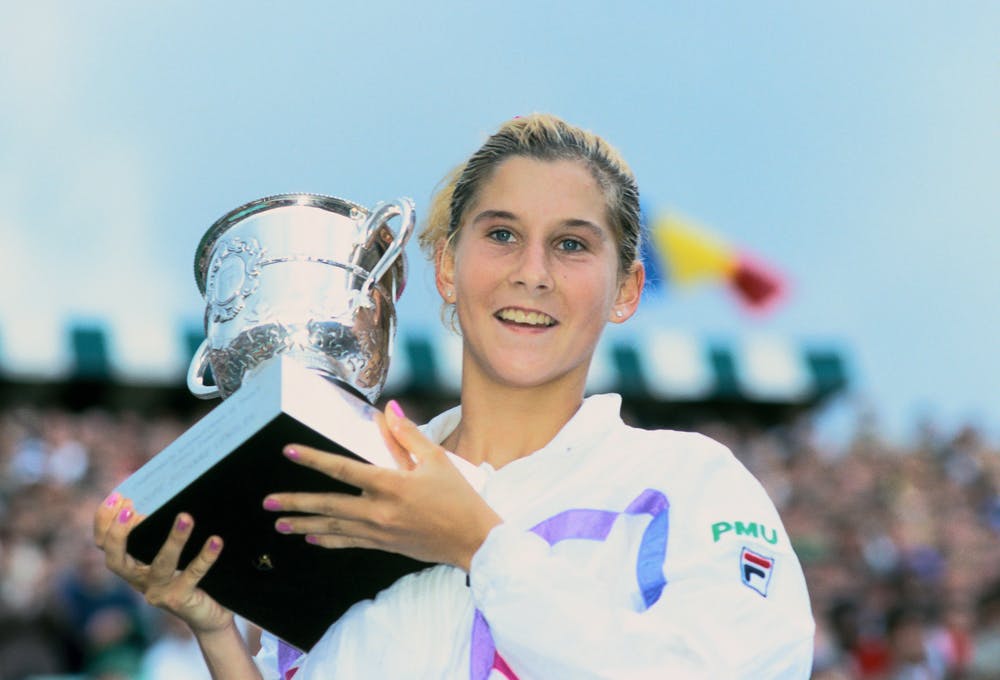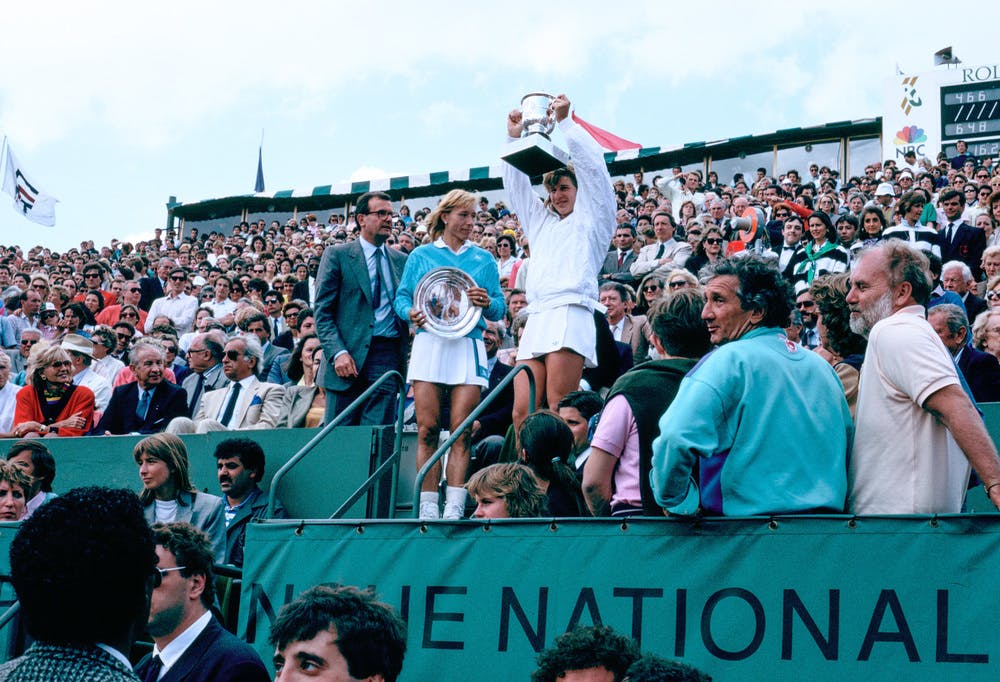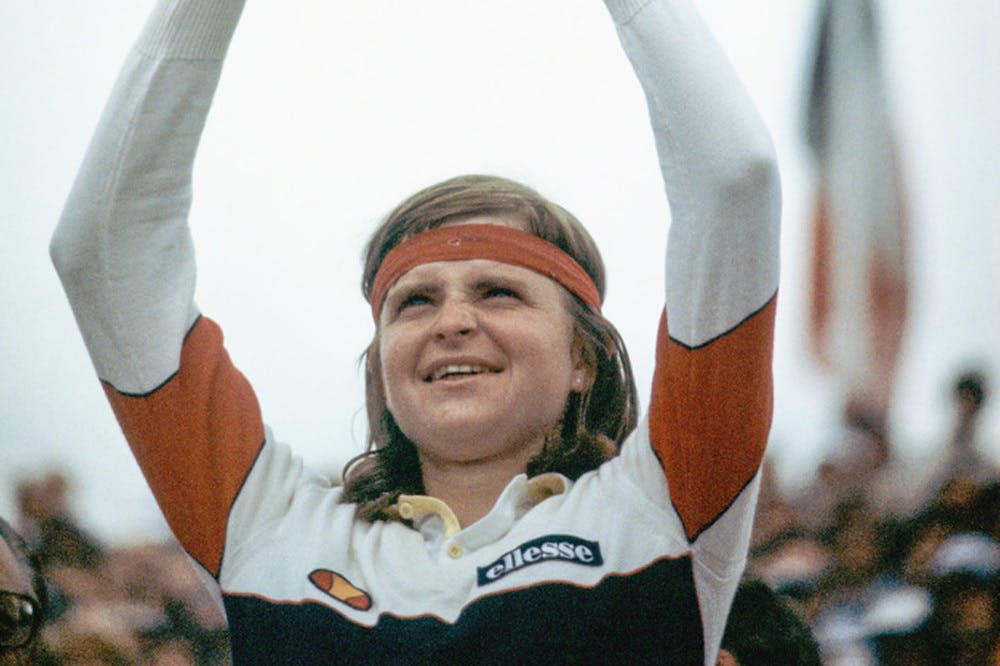Arantxa Sanchez-Vicario (1989)
The 10th-ranked Sanchez Vicario was just 17 when she stunned the heavily-favoured Graf in the 1989 final, 7-6, 3-6, 7-5. The Barcelona native had to fight like a lion to beat Graf, who had been trying to win her sixth Grand Slam singles title in a row.
Sanchez-Vicario saved two set points at 5-6 in the first set, clinched a close tie-break in the second set and rallied back from 5-3 down in the third to close it out.
The normally cool Graf was so impressed, she hugged the Spaniard at the net after their epic match concluded.
“I fought for three hours to win the tournament of my life, the one I've been dreaming about,” said Sanchez-Vicario after beating Graf. “I'm very proud.”
Their 1989 clash at Roland-Garros was the start of one of the sport’s most entertaining rivalries. The pair would play each other 36 times, with Graf winning 28 matches.
Sanchez-Vicario announced her retirement in 2002, having won 29 career titles, including two more Roland-Garros championships and the US Open. She rose to the No.1 ranking in 1995, and reached the final of all majors at least once.
 ROLAND-GARROS
20 May - 9 June 2024
ROLAND-GARROS
20 May - 9 June 2024


 © Corinne Dubreuil/FFT
© Corinne Dubreuil/FFT © FFT
© FFT © Liliane Chedikian/FFT
© Liliane Chedikian/FFT © FFT
© FFT ©FFT
©FFT ©FFT
©FFT